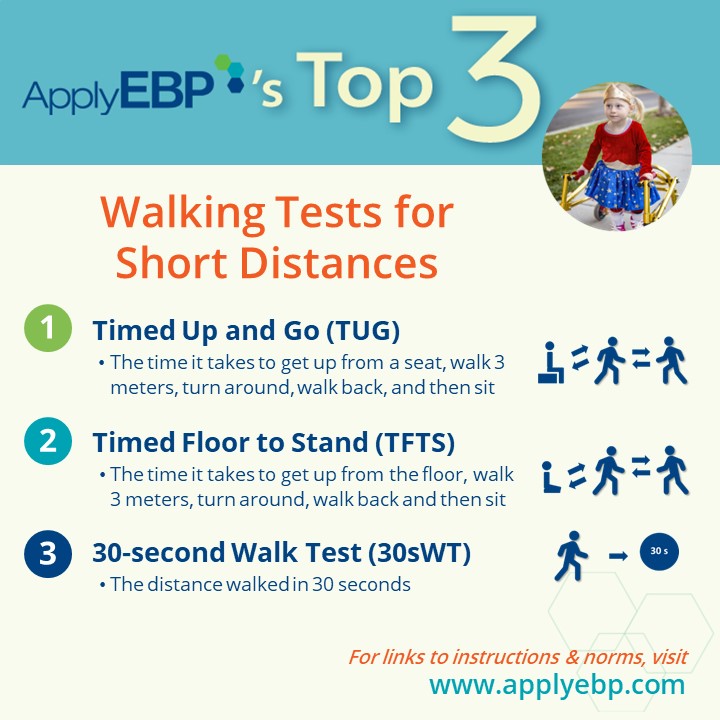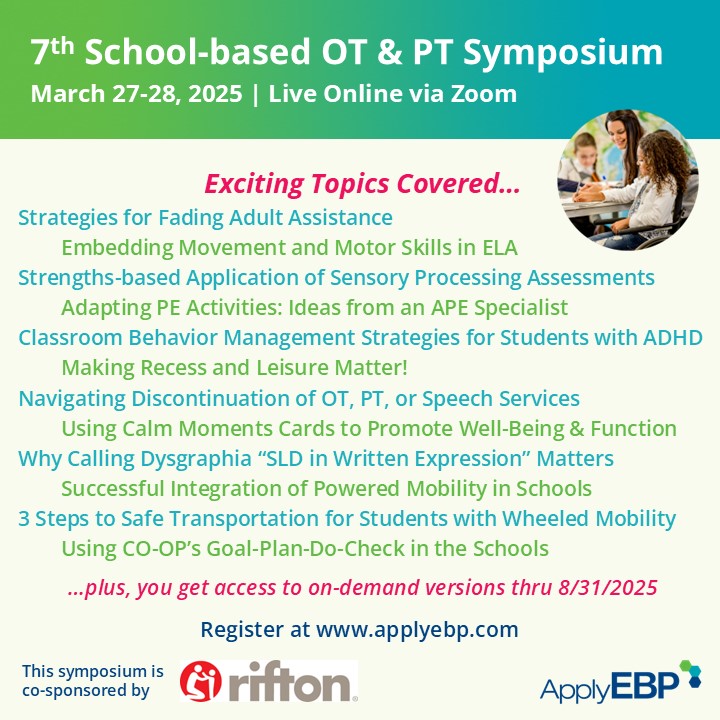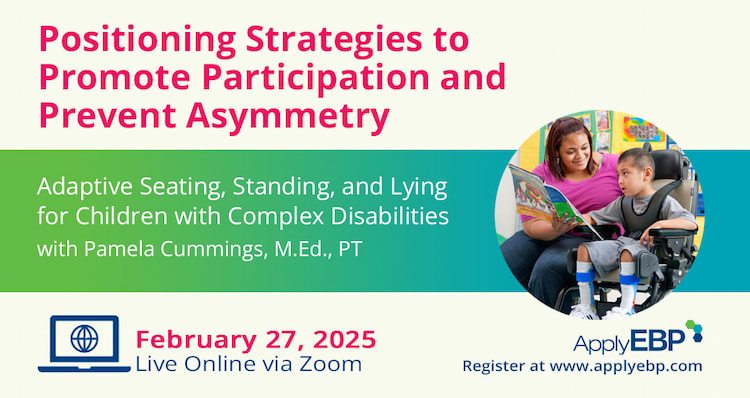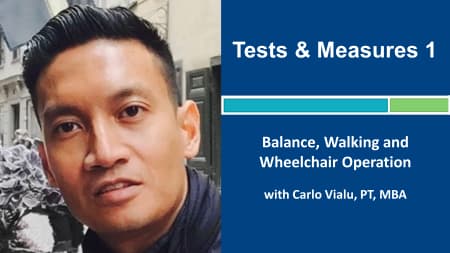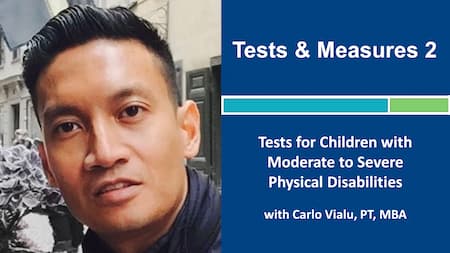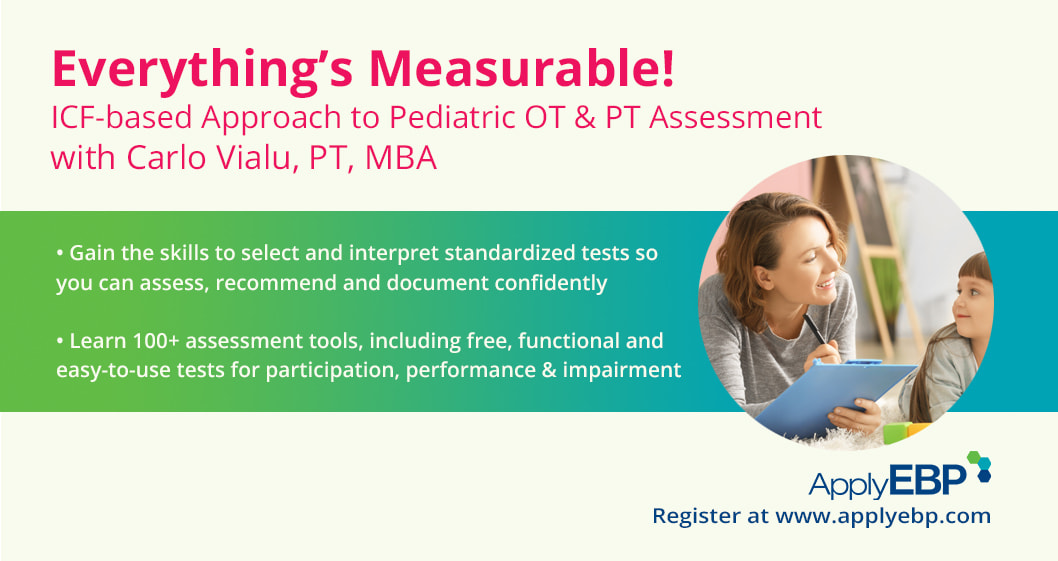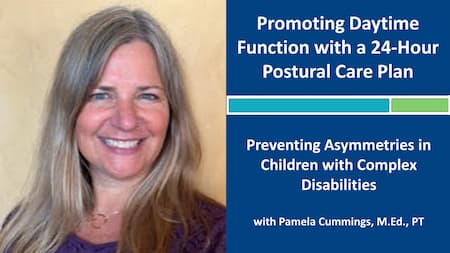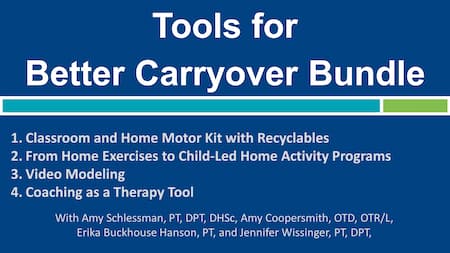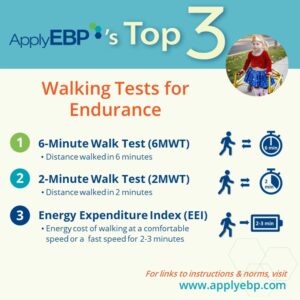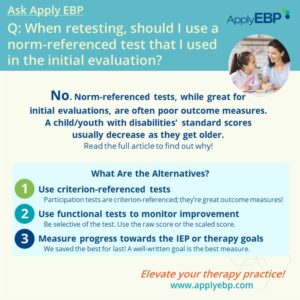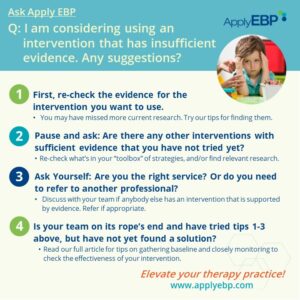Ask Apply EBP
Top 3 Short-Distance Walking Tests
Note that this article is part of a series of articles on assessment. If you have not done so, first, read this articles:
-
-
-
- Must-Have Test and Organizing Your School-based Assessment – discusses the 5 critical reasons for assessing participation first
- 3 Principles for Selecting Tests – discusses the 3 principles to use when selecting tests at the activity and body function & structure levels
-
-
Q: What are the best tests for…Short-Distance Walking?
We often get the question about what are the best tests for walking, balance, handwriting, etc. In this artilce we tackle our recommended functional tests for short-distance walking with links to available norms:
1. Timed Up and Go (TUG)
The TUG measures the time it takes to get up from a seat, walk 3 meters, turn around, and then walk back to sit down on the same seat.
-
-
- Test instruction: Click here for the TUG procedures
- Reference Data: Click here for reference data
- Equipment needed: timer, bench/stool, floor tape
- Why we like this test:
- It measures the performance of an activity that occurs many times in school or at home.
- This test is appropriate when you notice difficulties moving around smaller spaces like the classroom or the home, where getting up from a seat and walking is involved.
- What to note: There are a few different protocols for performing the TUG. Some are designed for children with Cerebral Palsy, or children with Down Syndrome. Some ask that the child walk at a fast speed, while others at a self-selected speed. Make sure you follow the protocol that corresponds to the norms that you are using.
-
2. Timed Floor to Stand (TFTS)
The TFTS measures the time it takes to get up from the floor, walk 3 meters, turn around, and then walk back to sit down in the same spot on the floor
-
-
- Test instruction: Click here for the TFTS-Normal procedures
- Reference Data: Click here for reference data
- Equipment needed: timer, floor tape
- Why we like this test:
- It simulates what can be a struggle for many children with disabilities.
- This test is appropriate when you notice difficulties with transitioning between various positions, such as moving from circle time back to the desk, or from playing on the floor, back to the sofa.
- What to note: It does not matter how the child gets up from the floor. If you think the strategy the child is using to get up from the floor is impacting their performance, you can note this in your report.
-
3. 30-second Walk Test (30sWT)
The 30sWT is a simple test to measure the distance walked in 30 seconds
-
-
- Test instruction: Click here for the TFTS procedures
- Reference Data: Age-expanded reference data
- Equipment needed: timer, floor tape, cone markers
- Why we like this test:
- It is a quick test for walking short distances.
- This test is appropriate when you notice difficulties moving between nearby rooms of the school or from one part of the house to another.
- What to note: Make sure to round off the corners of the walking course so that the child does not have to make sharp turns. Watch out for walking tandem on the line, or running – ask the child to re-do the test if these happen!
-
If you want to learn more about these and other walking tests, take one of these Assessment On-Demand Webinars.
References:
Itzkowitz, A., Kaplan, S., Doyle, M., Weingarten, G., Lieberstein, M., Covino, F., & Vialu, C. (2016). Timed up and go: reference data for children who are school age. Pediatric Physical Therapy, 28(2), 239-246.
Lieberstein, M., Weingarten, G., Vialu, C., Itzkowitz, A., Doyle, M., Covino, F., & Kaplan, S. L. (2018). Thirty-second walk test: expansion of normative data. Pediatric Physical Therapy, 30(1), 18-25.
Weingarten, G., Lieberstein, M., Itzkowitz, A., Vialu, C., Doyle, M., & Kaplan, S. L. (2016). Timed floor to stand-natural: reference data for school age children. Pediatric Physical Therapy, 28(1), 71-76.
Find More Answers to Your Questions in Our...
Featured School
Symposium
Featured Live
Workshop
Featured On-Demand
Webinar
Promoting Daytime Function with a 24-Hour Postural Care Plan
Featured Webinar
Bundle
Tools for Better Carryover Bundle
Have a question?
Submit here…
*Clicking submit will send your question directly to our email inbox. Your name and email will let us know that your submission is real (not spam). We will not include these in our posts, unless you tell us to include your name. Please read our privacy policy here.
All infographics and videos on www.applyebp.com are intellectual properties of Apply EBP, LLC
You may use the infographics and videos for free for any non-commercial, educational purposes. Please cite the source as “Apply EBP, LLC” and a link to the source article. If you plan to use any infographic or video for commercial purposes (i.e., for profit), please email Carlo@applyebp.com to obtain a written permission. Permission can be granted on a case-by-case basis.

